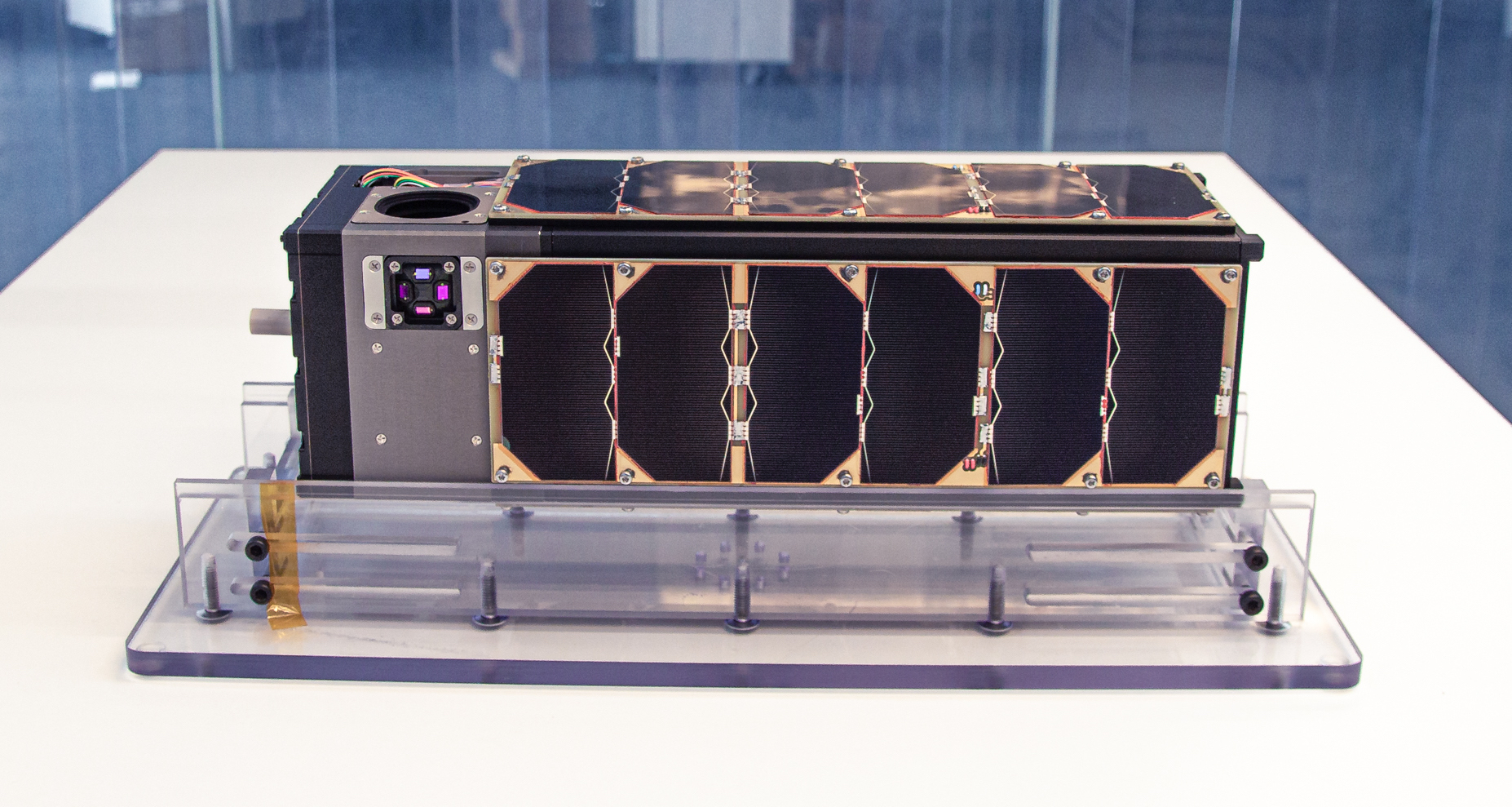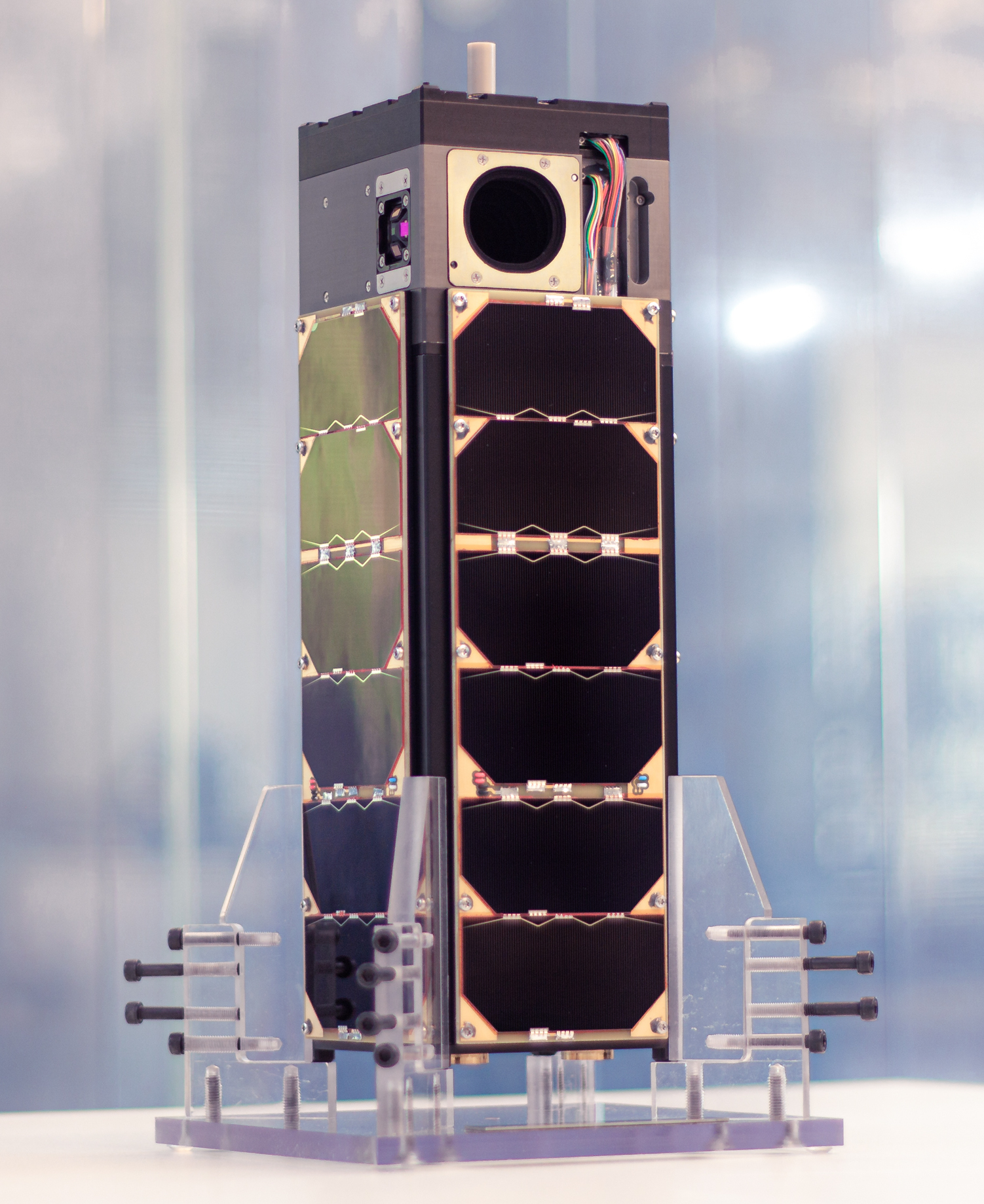
On 30 June 2021, the first-ever satellite with a W-band radio transmitter on board was launched. The objective of the mission, funded under the ARTES Advanced Technology programme, is to improve our understanding of the atmospheric effects in the propagation of radio signals at such a high frequency band. The mission’s success will help pave the way for future operational telecom services in W-band.

“Following the successful launch of the spacecraft from Cape Canaveral, Florida, USA, and deployment in a 550-Km-altitude sun-synchronous orbit, telemetry confirmed that the spacecraft is in good health and that its transmitting beacons are operating as expected,” says Arturo Martín Polegre, Technical Officer of the project at ESA.
The launch marks the beginning of a two-year campaign of measurement collection where continuous-wave radio signals will be routinely received and processed on the ground – in order to build a better picture of the atmospheric channel propagation statistics. This will be carried out at the Joanneum Research facilities, in Graz, Austria. The research group is leading the European consortium who designed, manufactured and built the spacecraft and associated ground segment for this mission. Joanneum Research already had valuable expertise in this field having been heavily involved in the Alphasat Q/V-band experiment (characterising atmospheric propagation in that frequency band).
“We are very happy to lead such a strong consortium of companies, which have made it possible to transmit a signal at 75GHz from a Low Earth Orbit Satellite for the first time,” says Michael Schmidt, Project Manager, W-Cube project, Joanneum Research
Consortium member Reaktor Space Lab designed, assembled and tested the spacecraft to make sure it could withstand the rigours of the launch and of the space environment. Reaktor Space Lab will now monitor the health of the spacecraft and run operations using the ground station they have set-up at their premises in Espoo, Finland.
The payload was developed by VTT, in Helsinki, Finland, and includes the frequency beacons that generate the signals transmitted to the ground station. The amplifiers and frequency converter came from the Fraunhofer Institute for Applied Solid State Physics, in Freiburg im Breisgau, Germany.
Portuguese Luis Cupido Technologies have developed the ground antenna, including the tracking system, and the University of Stuttgart, Germany, are also key players and will be at the peak of their involvement during the propagation campaign, using their expertise alongside Joanneum Research for the signal processing and extraction of the propagation channel characteristics.
“With this project, Europe keeps its leading position in the wave propagation field for satellite communication,” affirms Michael Schmidt, Joanneum Research.
Elodie Viau, ESA Director of Telecommunications and Integrated Applications, said “This is a great example of how ESA’s ARTES programme can make very significant contributions to next-generation satellite telecommunication services. Congratulations to the team who have paved the way for the first W-band transmission from space.”




